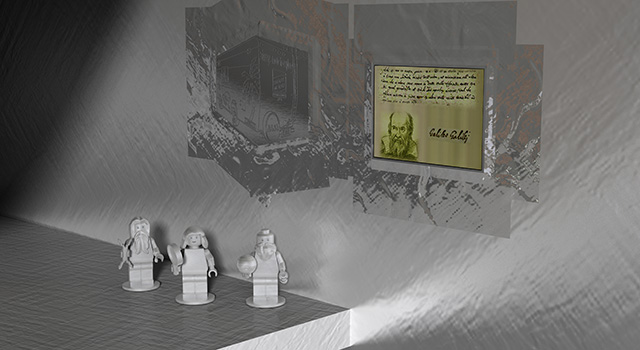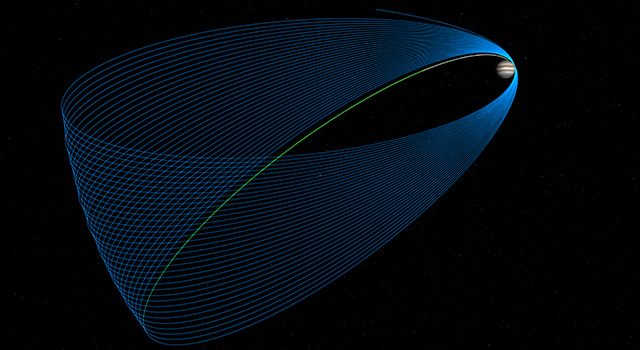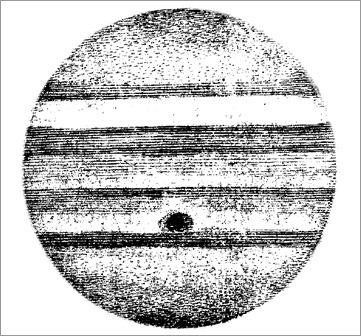Jupiter Overview
Jupiter is a giant ball of gas 11 times wider than Earth, 300 times more massive than our planet and five times farther from the sun. The giant world takes 12 years to orbit the sun, but rotates so fast that its day is only 10 hours long.
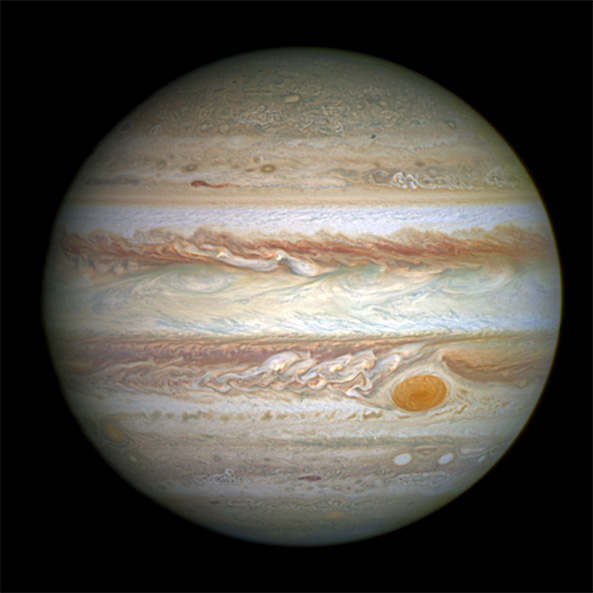
Image of Jupiter taken by the Hubble Space Telescope in 2014. Credit: NASA, ESA, and A. Simon
As the most massive world in our solar system, orbited by four large moons and many smaller ones, Jupiter forms its own solar system in miniature. Jupiter resembles a star in composition, and if it had been about 80 times more massive, it would have become a star rather than a planet.
Jupiter's appearance is a tapestry of beautiful colors and swirling atmospheric features. Most of its visible clouds are composed of ammonia and hydrogen sulfide. Water clouds exist deep below and can sometimes be seen through clear spots in the higher cloud layers. Jupiter's "stripes" are created by strong east-west winds in the planet's upper atmosphere. Within these belts and zones are storm systems that can rage for years. The most notable of these long-lived features is the Great Red Spot, a giant, crimson- colored vortex twice as wide as Earth, which has been observed for at least a couple hundred years. In recent years, the Great Red Spot has appeared to be shrinking in its east-west width.
The composition of Jupiter is similar to that of the sun — mostly hydrogen and helium. Its composition and great size imply that it was the first planet to form, incorporating most of the leftover gas not incorporated into the sun.
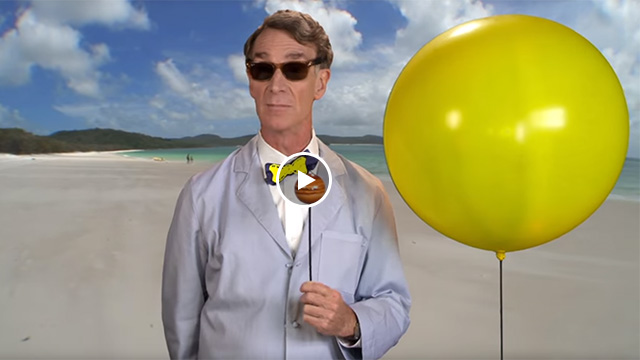
Deep in the atmosphere, the pressure and temperature increase, compressing the hydrogen gas into a liquid. At depths of about a third of the way down, the hydrogen becomes a liquid that conducts electricity like a metal. Scientists think Jupiter's powerful magnetic field is generated by electrical currents in this giant, swirling ocean of liquid metallic hydrogen, driven by Jupiter's fast rotation. At the planet's center, the temperature is several times hotter than the surface of the sun, and the pressure is tens of millions of times the air pressure on Earth. A dense core of heavy elements, larger than Earth, may exist in this extreme environment.
Jupiter's enormous magnetic field is nearly 20,000 times as powerful as Earth's field. The field dominates a vast area of space called the magnetosphere, where it traps swarms of charged particles -- electrons and ions. Some of these particles become trapped in an intense radiation belt near the planet, creating a hazard for visiting spacecraft. The Jovian magnetosphere has a tadpole shape, ballooning outward 600,000 to 2 million miles (1 to 3 million kilometers) toward the sun and tapering into a long tail that extends more than 600 million miles (1 billion kilometers) outward from Jupiter, to as far as Saturn's orbit.
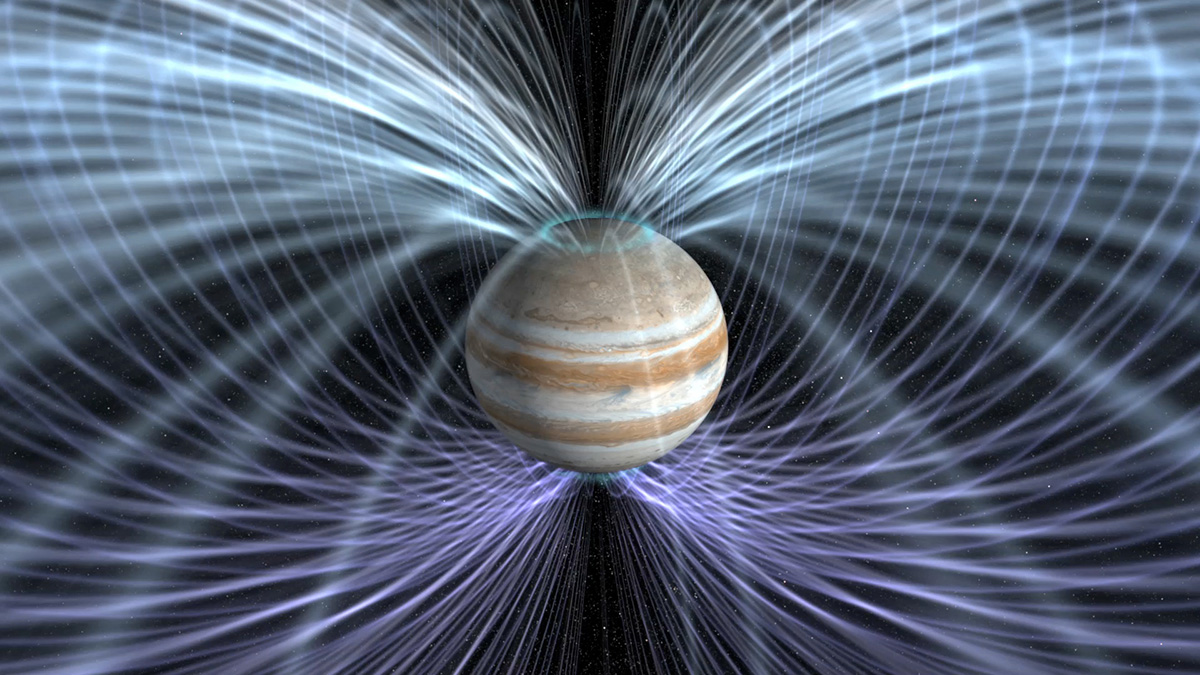
Artist's rendering of the invisible lines of Jupiter's magnetic field. Credit: NASA/JPL-Caltech
Jupiter's magnetic field also channels charged particles into the upper atmosphere near the poles, creating brilliant auroras -- northern and southern lights. Unlike Earth's auroras, which are produced largely through the interaction of our planet's magnetic field and the solar wind, Jupiter's auroras are dominated by the planet's own rotation.
Jupiter has four large moons -- Io, Europa, Ganymede and Callisto -- and more than 60 smaller, confirmed moons. Like the other three giant planets in our solar system, Jupiter also has a system of rings, although they are much fainter than the rings of Saturn. Unlike the icy rings of Saturn, Jupiter's rings are composed largely of dust particles, likely kicked up as micrometeoroids smash into the planet's four small inner moons.
Observing Jupiter
Jupiter viewing in June and July 2016
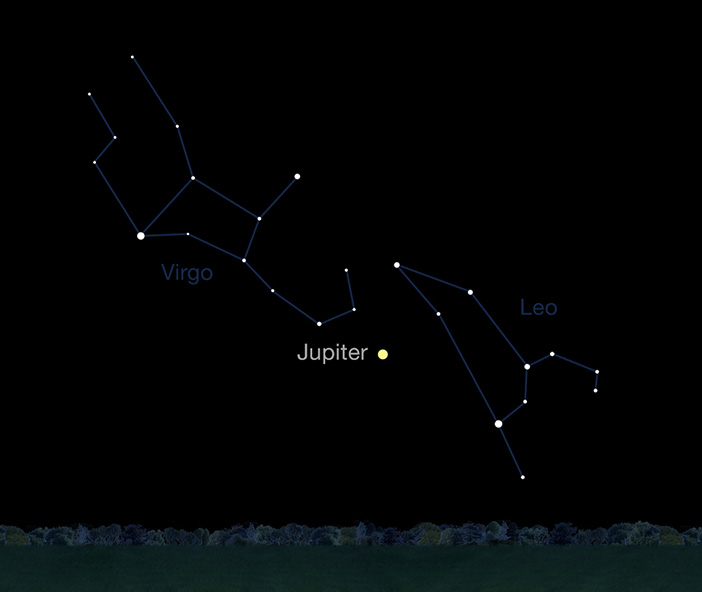
During June, look to the western sky after sunset. Jupiter will be visible until midnight.
On June 11, Jupiter appears very close to the moon. On July 4, Jupiter appears a little lower in the western sky than in June, and still lower by month's end. On July 9, the moon and Jupiter again appear close to one another.
What to Look for
Jupiter dominates the evening sky January through August this year. Lost from view in September, when it passes behind the sun, it reappears in the morning skies in October 2016. To the naked eye, the planet appears like an extremely bright, unflickering star. Through binoculars or a small telescope, the planet's four large moons and some features in its atmosphere can be glimpsed.
In 1667, Giovanni Domenico Cassini observed a great spot on Jupiter -- which he called "the Permanent Spot" -- and many cloud bands. Earlier in that century, in 1610, Galileo Galilei observed the planet's four large moons over several weeks, charting their movement around the planet for the first time.
Today's stargazers will be amazed to see these distinct features for themselves, using even the most modest equipment. Jupiter is so bright that it’s easily seen from even the brightest city at night. NASA's Night Sky Network can help members of the public find nearby astronomy clubs, and astronomy events are frequently held by local museums, nature centers and university astronomy programs.
Jupiter observing resources:
Night Sky Network http://nightsky.jpl.nasa.gov/
NASA Museum Alliance https://informal.jpl.nasa.gov/museum/Visit
Juno JunoCam Citizen Science program https://www.missionjuno.swri.edu/media-gallery/junocam
What’s Up in the Night Sky video series http://solarsystem.nasa.gov/news/category/whatsup
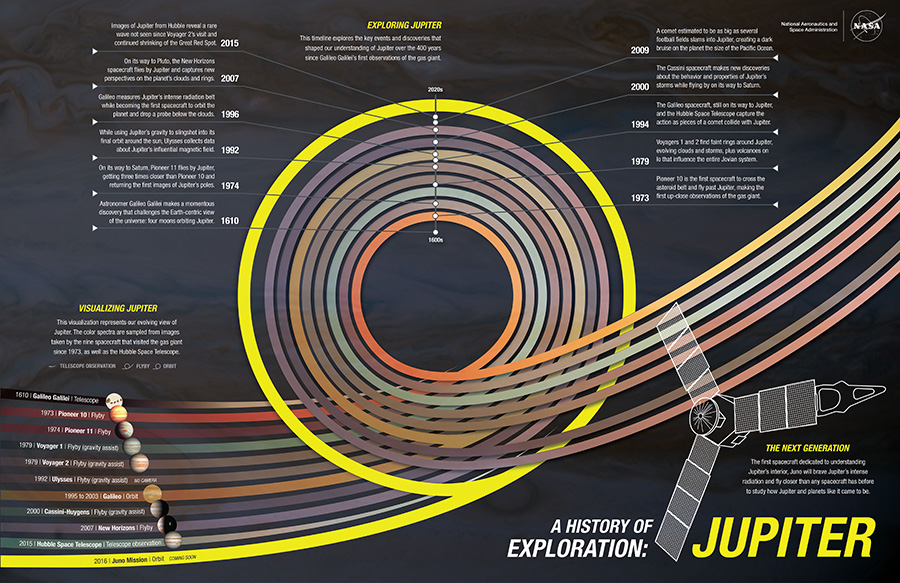
Click to enlarge
Why Juno?
The primary motivation for the Juno mission is to improve our understanding of the history of our solar system.
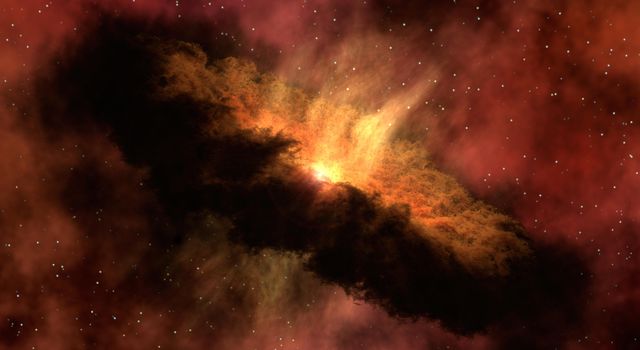
Artist's rendering of a solar system like our own, early in the process of formation. Credit: NASA/JPL-Caltech
Jupiter was likely the first of the planets to form around our sun because it contains a lot of the same light gases that the sun is made of -- hydrogen and helium. After the first few million years in the sun's life, an intense solar wind was generated that blew away most of the light gases remaining from the original stellar nursery. For Jupiter to be primarily composed of hydrogen and helium, it must have formed while there were still a lot of those light gases around -- when the solar system was young.
Since Jupiter is mainly made of the same material as the original solar nebula, the gas giant is thought to hold clues about the solar system's early history. Although people have been studying Jupiter for hundreds of years, many basic questions about the gas giant planet remain.
In 1995, NASA's Galileo mission made the voyage to Jupiter. One of its jobs was to drop a probe into Jupiter's atmosphere. The data returned from that probe showed us that Jupiter's composition was different than scientists thought, indicating that our theories of planetary formation were wrong. Even with all the things we learned from Galileo and other studies over the past couple of decades, Jupiter still hides many mysteries beneath its swirling clouds:
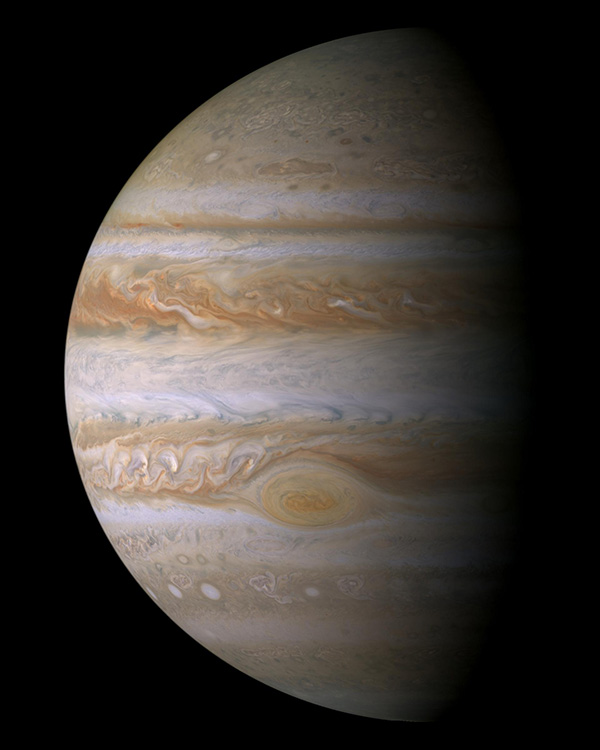
The largest image mosaic of Jupiter yet produced, from NASA's Cassini spacecraft. Credit: NASA/JPL-Caltech/Space Science Institute
How did Jupiter form?
How much water or oxygen is in Jupiter?
What is the structure inside Jupiter?
Does Jupiter rotate as a solid body, or is the rotating interior made up of concentric cylinders?
Is there a solid core, and if so, how large is it?
How is its vast magnetic field generated?
How are atmospheric features related to the movement of the deep interior?
What are the physical processes that power the auroras?
What do the poles look like?
Juno's primary goal is to reveal the story of Jupiter's formation and evolution. The spacecraft will observe the planet's gravity and magnetic fields, atmospheric dynamics and composition, and the complex coupling between the interior, atmosphere and magnetosphere that determines the planet's properties and drives its evolution. In addition to vastly improving our knowledge of Jupiter itself, as the archetype of gas giant planets, Jupiter will provide the knowledge to help us understand the origins of planetary systems around other stars.
Juno's Mythical Connection
In Roman mythology, Jupiter -- king of the gods -- drew a veil of clouds around himself to hide his mischief. It was Jupiter's wife, the goddess Juno, who was able to peer through the clouds and reveal Jupiter's true nature. The Juno spacecraft will look beneath the planet Jupiter's clouds to see what the secretive world is up to….not seeking signs of misbehavior, but helping us understand the gas giant's structure and history.


